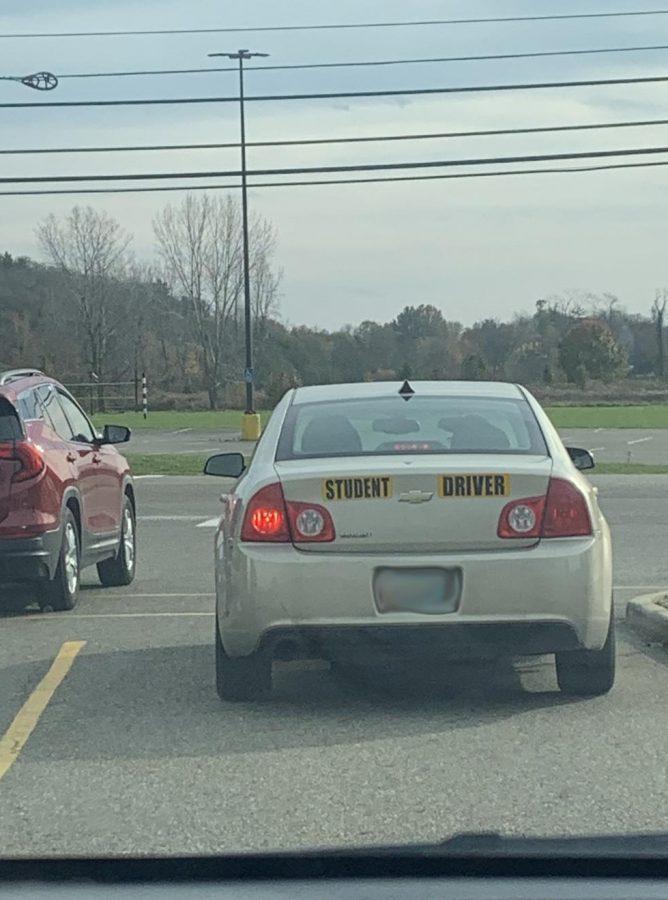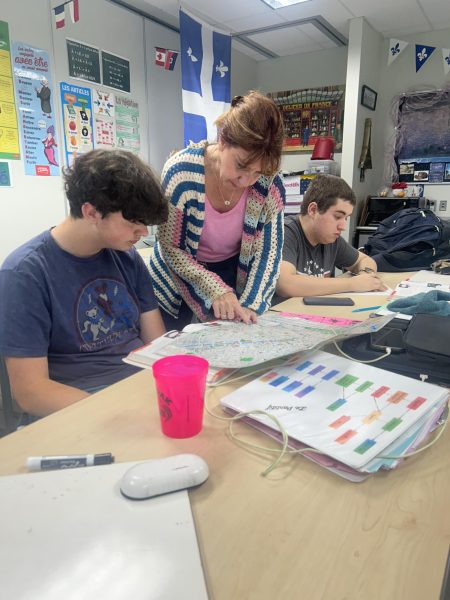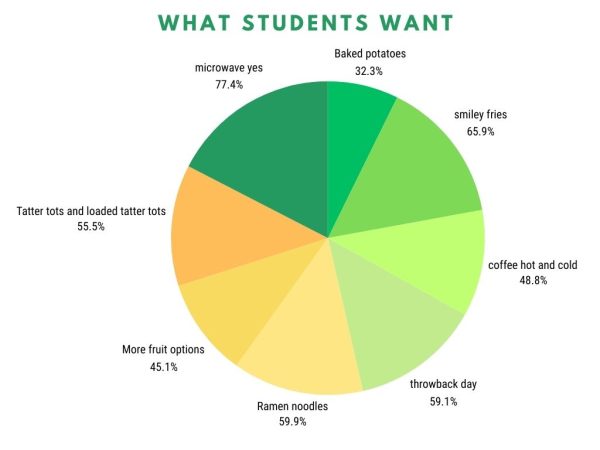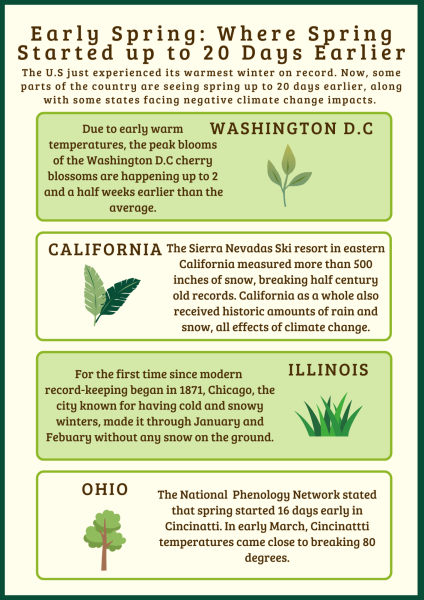Students face long waits for driver’s ed
A student leaves the GlenOak parking lot after school for a in-car.
Driver’s ed is back!
Backed up, that is. Since COVID-19, the driver’s ed instruction classes and in-cars have been a hot commodity, and getting into them has been like trying to snag tickets for a one-night-only concert from the next hit artist.
Driver’s ed, short for driver’s education, is a course students under the age of 18 are required to take in order to get their license. The class covers safety, driving tips, and laws. At the end of the course, a 40 question quiz is issued out to the students, who must pass with a minimum of 75%.
In the State of Ohio, the class requires a full 24 hours of instruction, whether that be online, on a program like Zoom, or in person at the high school or in separate driving schools like Meyer.
However, with the COVID-19 complications, limited spots are in these classrooms, leaving most students stuck with the option of online classes.
This means 24 hours of class, a screen instead of an instructor. No questions can be asked, and therefore none will be answered, which could be dangerous for these kids later on the road.
“If I didn’t understand something, the videos kept playing,” sophomore Adam Crowder said. “I couldn’t get clarification.”
In addition to this, the lack of structure in online classes leads to no motivation from the students.
“I had a really hard time focusing online,” Crowder said. “There was no timeline, so I kept getting distracted.”
Since the lessons can be stopped and started at any time, this makes it easier for students to neglect the responsibility.
“I just got mine done and I’ve had my temps for five months,” senior Tajouis Alkaied said. “Probably more. My temps are expired.”
Along with the freedom of time, the environment also can create difficulties in completing the course.
“It was hard for me to learn to drive while in such a relaxed environment,” senior Kiara Derbyshire said. “My room was not the best place for me to focus.”
Sophomore Myah Clark tried to avoid the struggles of online driving classes by signing up for the classes taught at school or a nearby driving academy.
“It’s been backed up for six months,” Clark said.
As a result, students have either been limited to choosing the online option or to wait months for the in-person classes.
From there, the student must schedule four in-cars, which are two-hour sessions with a certified driving instructor in the passenger seat. Students practice driving on main roads, highways, and maneuverability.
Contrary to driver’s ed classes, in-cars cannot be completed online, leaving students waiting months for their instruction.
“I had to cancel an in-car because of a dance rehearsal, and they said it would be another three months before they could get me in,”junior Kennedy McGuire said.
I had to cancel an in-car because of a dance rehearsal, and they said it would be another three months before they could get me in.
— Kennedy McGuire
The issue of waiting three or more months to even get a single in-car also occurred for junior Sydnie Wilson.
“I turned 16 on July 2, signed up for my in-cars, and my last one was just last Wednesday,” Wilson said.
She tried to stay on top of things and schedule her in-cars early, but it wasn’t early enough.
“I couldn’t get my first one until Oct. 21,” Wilson said.
Not only is this frustrating for students because the wait is so long, but it is also disappointing because kids are ready to finally get their licenses and have that freedom.
“I was really eager to get my license after I finished driver’s ed,” junior Jonny Michael said. “I soon figured out I had to wait over three months just for an in-car.”
Even after the waiting, oftentimes the student still does not get anything out of the in-car.
“My driver probably fell asleep three times every single in-car,” senior Tanner Guist said. This exact experience was echoed by senior Madison McCarthy, whose instructor also napped during their sessions.
No one is quite sure how to solve this debacle, but one thing is for sure: the driver’s ed programs need to slam on the gas and speed up.
Your donation will support the student journalists of GlenOak High School. Your contribution will allow us to purchase equipment and cover our annual website hosting costs.
















